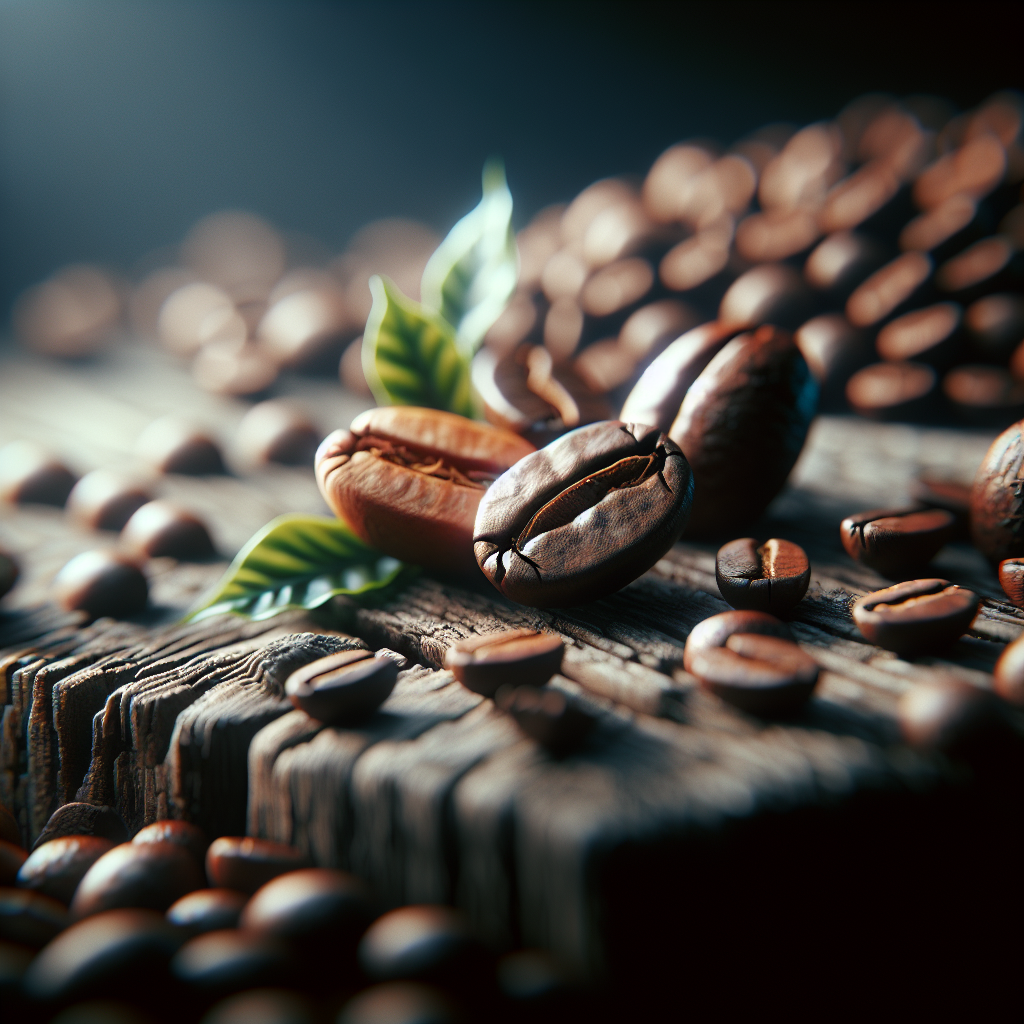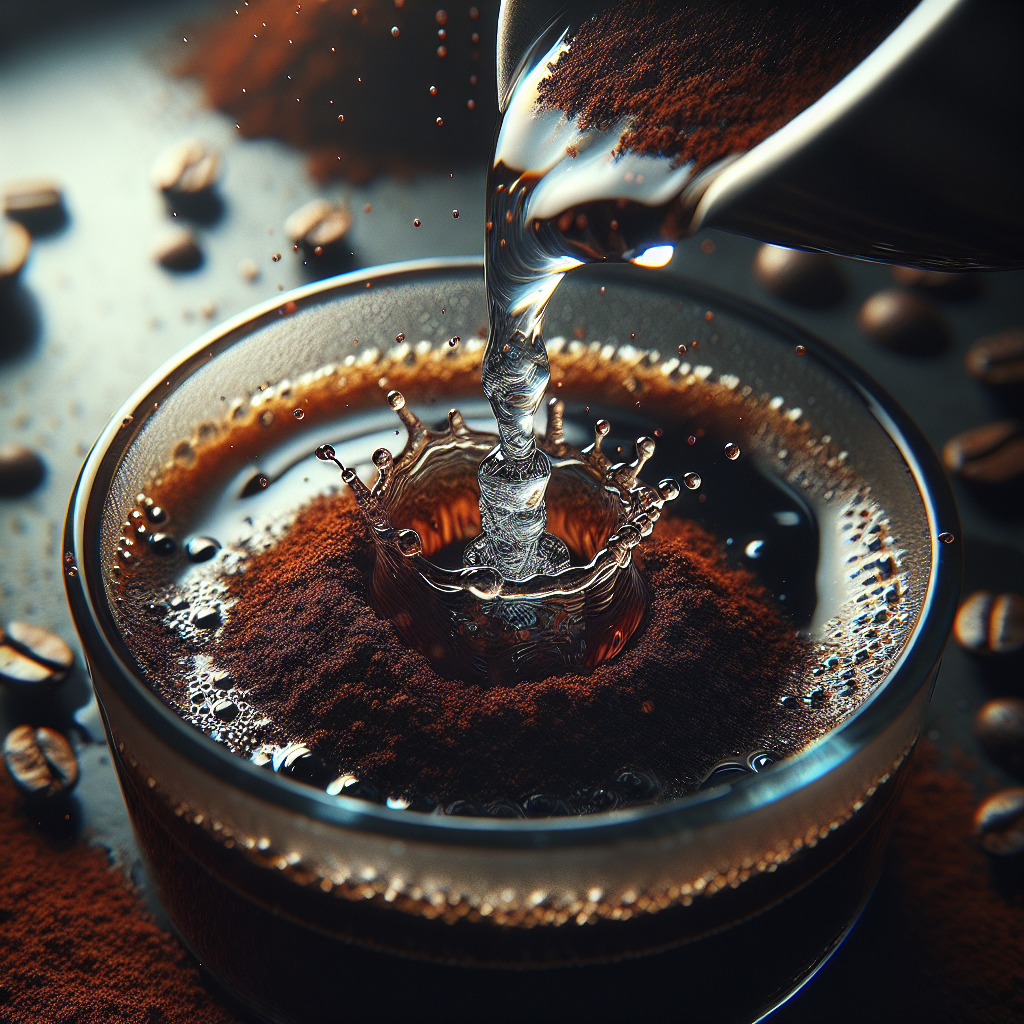Understanding the Different Types of Coffee Beans
Comparing Coffee Bean Taste Profiles
| Coffee Bean Type | Flavor Profile | Bitterness & Acidity | Preferred Brewing Method | Caffeine Content |
|---|---|---|---|---|
| Arabica | Smooth, sweet with hints of fruit | Low bitterness, high acidity | Pour-over, Drip | Less caffeine |
| Robusta | Strong, bold, earthy | High bitterness, low acidity | Espresso, French press | More caffeine (twice as much as Arabica) |
| Liberica | Unique, woody or smoky | Balanced bitterness, unique boldness | Blends for unique flavors | Variable |
| Excelsa | Dark fruit notes, complex | Tangy, hint of bitterness | Aeropress, Pour-over | Variable |
1. Arabica (Coffea arabica)
SEO Keyword: Arabica Coffee Beans
Overview: Arabica coffee beans are the most popular and widely consumed beans globally, accounting for about 60-70% of total coffee production. They are highly prized for their smooth, sweet flavor profile, often featuring hints of fruit and sugar.
Bitterness and Acidity: Arabica beans have low bitterness and higher acidity compared to other coffee beans, making them particularly well-suited for those who enjoy a milder taste.
Preferred Growing Conditions: These beans thrive at higher altitudes in temperate climates. The specific conditions contribute significantly to their superior flavor.
Regional Cultivation: Commonly grown in regions such as Latin America, East Africa, and parts of Asia, Arabica beans benefit from the unique climates and altitudes found in these areas.
Market and Popularity: Due to their mild and pleasing flavor, Arabica beans are widely preferred by consumers worldwide.
Brewing Recommendations: The delicate flavors of Arabica are best preserved using gentle brewing methods like pour-over or drip.
Price Point: Arabica beans are typically more expensive than other types due to their more sensitive growing conditions and higher production costs.
2. Robusta (Coffea canephora)
SEO Keyword: Robusta Coffee Beans
Overview: Robusta coffee beans are known for their strong, bold flavor, with earthy and woody notes. They are more bitter than Arabica beans and account for about 30-40% of global coffee production.
Bitterness and Acidity: These beans have a high bitterness and low acidity, which gives them a distinctively sharp taste.
Preferred Growing Conditions: Robusta plants are more robust and can grow at lower elevations and in warmer climates. They are also more disease-resistant.
Regional Cultivation: Predominantly grown in regions such as Vietnam, Brazil, and parts of Africa, Robusta beans are essential for many commercial coffee blends.
Market and Popularity: Commonly used in instant coffee and espresso blends, Robusta beans provide a strong flavor that is favored by many for its intensity.
Caffeine Content: Robusta beans contain about twice the caffeine of Arabica beans, contributing to their more robust flavor profile.
Brewing Recommendations: Due to their strong flavor, Robusta beans are suitable for robust brewing methods like espresso or French press.
3. Liberica (Coffea liberica)
SEO Keyword: Liberica Coffee Beans
Overview: Liberica coffee beans are lesser-known and cater to a niche market. They have a distinct floral and fruity aroma with a woody or smoky taste that sets them apart from other coffee beans.
Bitterness and Acidity: These beans have balanced bitterness and a unique boldness that appeals to consumers looking for something different.
Preferred Growing Conditions: Liberica beans thrive in specific regions with unique soil and elevation conditions, such as the Philippines and parts of West Africa.
Regional Cultivation: Mainly found in the Philippines, Malaysia, and parts of West Africa, Liberica beans contribute to the diversity of global coffee flavors.
Market and Popularity: These beans appeal to niche consumers and are often used to add unique flavors to blends.
Price Point: Generally more expensive due to limited production and unique taste, Liberica beans are a specialty product.
4. Excelsa (Coffea excelsa)
SEO Keyword: Excelsa Coffee Beans
Overview: Originally classified as a separate species, Excelsa is now considered a variant of the Liberica bean. It is known for its complex flavor profile, featuring dark fruit notes and a taste reminiscent of dark chocolate.
Bitterness and Acidity: Excelsa beans offer a tangy, fruity taste with a hint of bitterness, making them unique among coffee types.
Preferred Growing Conditions: These beans thrive in Southeast Asia and are predominantly grown in countries like Vietnam and the Philippines.
Market and Popularity: Valued for adding unique flavors to blends, Excelsa beans are attractive to those seeking more adventurous coffee experiences.
Brewing Recommendations: The complex flavors of Excelsa are best enjoyed through brewing methods that enhance their nuances, such as Aeropress or pour-over.
Consumer Appeal: Excelsa beans are ideal for coffee enthusiasts looking to explore unique and diverse flavor profiles.
5. Comparing Taste Profiles
SEO Keyword: Coffee Bean Taste Profiles
Arabica: Smooth, sweet flavor with low bitterness and high acidity. Ideal for those who prefer a mild and refined coffee experience.
Robusta: Strong, bold, and earthy with high bitterness and low acidity. Favored for espresso and robust coffee blends.
Liberica: Offers a unique woody or smoky taste with a distinct floral and fruity aroma. Perfect for those looking for a distinct coffee experience.
Excelsa: Features dark fruit notes with a complex, tangy, and slightly bitter profile. Appeals to those who enjoy adventurous and unique coffee flavors.
Consumer Preferences: Taste preferences vary widely among coffee drinkers, leading to different choices that cater to individual palates.
Market Availability: Arabica beans dominate the specialty coffee market, while Robusta is more common in instant coffee and commercial blends.
Purpose in Blends: Each type of coffee bean brings its own unique characteristics to coffee blends, enhancing the overall flavor complexity.
Global Influence: Regional palates and cultural preferences significantly influence the popularity and consumption of different coffee beans globally.
6. Growing Conditions and Their Impact
SEO Keyword: Coffee Bean Growing Conditions
Altitude: Arabica beans are grown at high altitudes, which contribute to their delicate flavors. In contrast, Robusta beans grow at lower elevations, resulting in stronger taste profiles.
Climate: Arabica thrives in temperate climates, while Robusta is better suited to warmer environments.
Soil Type: Specific soil conditions are required for growing high-quality Liberica and Excelsa beans.
Disease Resistance: Robusta beans are more resistant to diseases compared to Arabica, making them cheaper and easier to produce.
Harvest Seasons: The availability of coffee beans varies between regions, impacting the consistency and supply of different types.
Growth Cycle: The time from planting to harvesting affects the quality and flavor of the beans. Arabica’s longer growing cycle contributes to its superior taste.
Impact on Flavor: Growing conditions such as altitude, climate, and soil type significantly influence the final flavor profile of coffee beans.
Sustainability: Environmentally friendly practices are becoming increasingly important in coffee cultivation, ensuring long-term sustainability for coffee producers and the environment.
Understanding the varied world of coffee beans can enhance your appreciation and enjoyment of each cup. Explore more fascinating coffee FAQs and deepen your knowledge here. Keep brewing, exploring, and savoring the uniqueness each variety brings to your coffee experience.
Shop at Breville now!
https://breville.oie8.net/oqDqrE
Shop Coffee Machine at Amazon now!
Click here!





